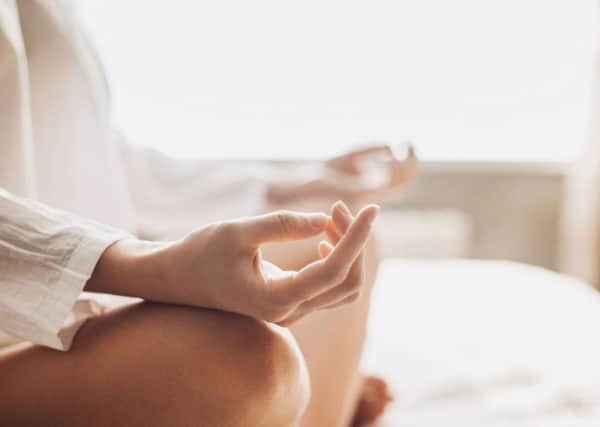Caroline Foster: Stressed and tense? The trick is to control breathing


Now, after many more years of practice and having become a yoga teacher, I can verify that the breath really is the key to yoga. We can think of the breath as a secret passage into our nervous system. And, very simply put, we can think of the nervous system as the connection between the body and the mind.
Think of the body’s reaction to stress, any type of stress - whether fleeing a tiger or lying in bed worrying about some hypothetical future event - the body’s reaction is the same. The heart beats harder and faster, you perspire, your mind races, your guts churn, you take faster and more shallow breaths. Most of the responses are beyond our control (they are controlled by the autonomic nervous system). You cannot consciously stop your heart from thumping, you cannot tell your sweat glands to simmer down ... but you can control your breath, at least you can learn to. And this is the secret passage, the way into our nervous system.
Advertisement
Hide AdAdvertisement
Hide AdIf we can learn to control the breath, to some extent we are learning to control the nervous system. Some small studies have suggested that deep breathing can change brain waves, to slower frequencies that are associated with more relaxed states. This may be why a yoga class can leave you feeling so calm and relaxed, and why yoga (or just breathing exercises) can be useful for helping us with anxiety, pain, childbirth, sleep disorders, the many physical symptoms of stress, and so much more.
Even if you attend yoga classes only for the physical benefits, by paying attention to (and working with) your breath, you will find that muscles are able to relax and lengthen much more easily - especially on the exhale, when the autonomic nervous system switches into ‘relaxation mode’ (the parasympathetic nervous system). The mechanical action of the ribs moving as we breathe helps to internally mobilise the spine, which helps us to move deeper into many postures, and by using the diaphragm correctly, we are also helping to build deep, internal core strength. There are also obvious benefits to the respiratory system itself.
From a yoga perspective, when we inhale, we absorb not only oxygen, but energy (prana), vital life force, from the atmosphere. In modern scientific terms this is thought of as electromagnetic energy; negatively charged particles. The yogic practice of pranayama, commonly thought of as breathing exercises, is actually designed to maximise the absorption and utilisation of this energy and may explain why we often feel energised after practicing yoga.
The breath is such an important aspect of yoga practice, and is the most powerful tool we have at our disposal to influence our nervous system, our state of mind and the tension we hold in our bodies. We carry our breath with us our whole lives, most of the time we barely even notice it. But by practicing yoga, by getting to know our breath and learning to control it, we can unlock the route to health and happiness.
Caroline Foster is a chartered physiotherapist and yoga teacher